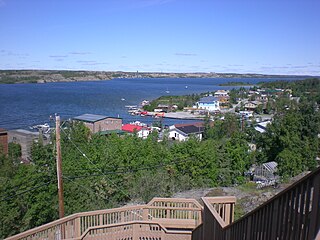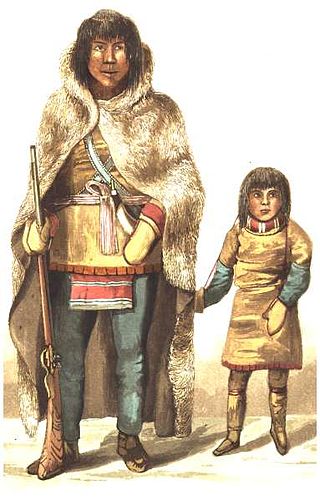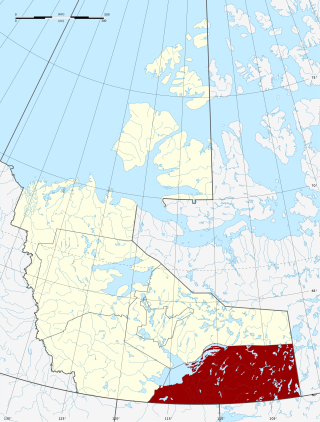| Year | Name | Position | School/DEA | Award | Awarding Body |
|---|
| 2019 | Shirley Lamalice | Teacher | Princess Alexandra School | Indspire Guiding the Journey Award – Language, Culture & Traditions [28] | Indspire |
| 2018 | Kate Powell | Principal | Deninu School | One of Canada's Outstanding Principals [29] | The Learning Partnership |
| 2018 | Lois Lafferty | Teacher (retired) | Joseph B. Tyrrell Elementary School | NWT Education Hall of Fame [30] | Department of Education, Culture and Employment |
| 2017 | Bess-Ann McKay | SSDEC Vice-chair | SSDEC; Fort Resolution DEA | Community Builder Award [31] | Aboriginal Sport Circle NWT |
| 2017 | JBT Jiggers(Lois Lafferty, Karen McFeetors, and Jessica Hval) | Volunteers | Joseph B. Tyrrell Elementary School | Minister's Culture and Heritage Circle Award – Group Category [32] | Department of Education, Culture and Employment |
| 2017 | Carolyn Carroll | Principal | Harry Camsell School and Princess Alexandra School | Polar Medal [33] | Governor General of Canada |
| 2017 | Pam Walsh | Literacy Coordinator | SSDEC | NWT Ministerial Literacy Champion Award [34] | Department of Education, Culture and Employment |
| 2017 | Chuck Lirette | Teacher | Diamond Jenness Secondary School | NWT Education Hall of Fame [30] | Department of Education, Culture and Employment |
| 2017 | Lori Rutherford | Teacher | Paul W. Kaeser High School | NWTTA Aboriginal Sport Circle Award [35] | Aboriginal Sport Circle NWT |
| 2017 | Paul Boucher | Indigenous Language Teacher | Paul W. Kaeser High School | NWT Premier's Award for Individual Excellence [36] | Government of the Northwest Territories |
| 2017 | Anna Cunningham | Program Support Teacher | Diamond Jenness Secondary School | Science Teaching Award for NWT/Nunavut [37] | NWT/Nunavut Association of Professional Engineers and Geoscientists |
| 2017 | Carolyn Carroll | Principal | Harry Camsell School and Princess Alexandra School | One of Canada's Outstanding Principals [38] | The Learning Partnership |
| 2016 | Alexandra McDonald | Teacher | Paul W. Kaeser High School | Innovation Award [39] | NWT Recreation & Parks |
| 2016 | Lynne Beck | Principal | Diamond Jenness Secondary School | Ministerial Restorative Justice Award [40] | Department of Justice |
| 2016 | Julie Lys | Fort Smith DEA Chair | Fort Smith DEA | Distinguished Alumni Award [41] | Athabasca University |
| 2016 | Leadership for Literacy (L4L) | Initiative | SSDEC | Indigenous Educator Awards - Organization Award [42] | Indspire |
| 2016 | Leadership for Literacy (L4L) | Initiative | SSDEC | Canadian Innovators in Education Awards – Third Place [43] | Canadian Education Association and Reader's Digest Canada |
| 2015 | Leadership for Literacy (L4L) | Initiative | SSDEC | Ministerial Literacy Award – Organization Award [44] | Department of Education, Culture and Employment |
| 2015 | Lutsel K’e Chipewyan Dictionary Committee | Initiative | SSDEC: Lutsel K'e | Premier's Award for Collaboration [36] | Government of the Northwest Territories |
| 2015 | Doris Camsell | Indigenous Language Teacher | Harry Camsell School and Princess Alexandra School | NWT Education Hall of Fame [30] | Department of Education, Culture and Employment |
| 2015 | Bruce Green | Teacher (retired) | Diamond Jenness Secondary School | NWT Education Hall of Fame [30] | Department of Education, Culture and Employment |
| 2015 | Deninu School | Students | Deninu School | Ministerial Literacy Award [45] | Department of Education, Culture and Employment |
| 2014 | Brent Kaulback | Assistant Superintendent | SSDEC | Canadian Superintendent of the Year [46] | Canadian Association of School System Administrators |
| 2014 | Celine Marlowe | Indigenous Language Teacher | Lutsel K'e Dene School | NWT Education Hall of Fame [30] | Department of Education, Culture and Employment |
| 2014 | Leadership for Literacy (L4L) | Initiative | SSDEC | Gold – Public Sector Leadership Award – Education [47] | Institute of Public Administration of Canada / Deloitte |
| 2013 | Angie Fabian | Indigenous Language Teacher | Deninu School | Prime Minister's Award for Teaching Excellence [48] | Government of Canada |
| 2013 | Jill Taylor | Inclusive Schooling Coordinator | SSDEC | NWT Recreation Parks Association Award [49] | NWT Recreation Parks Association |
| 2013 | Dan Summers | Principal | Deninu School | One of Canada's Outstanding Principals [50] | The Learning Partnership |
| 2013 | Doris Camsell | Indigenous Language Teacher | Harry Camsell School | Indspire Indigenous Educator Award – Language, Culture and Traditions [51] | Indspire |
| 2013 | Brent Kaulback | Assistant Superintendent | SSDEC | Indspire Indigenous Education Partner Award [51] | Indspire |
| 2013 | Ann Pischinger | SSDEC Chairperson | SSDEC; Fort Smith DEA | Queen Elizabeth II Diamond Jubilee Medal [52] | Government of Canada |
| 2013 | Bess-Ann McKay | SSDEC Vice-chair | SSDEC; Fort Resolution DEA | Queen Elizabeth II Diamond Jubilee Medal [53] | Government of Canada |
| 2013 | Jill Taylor | Inclusive Schooling Coordinator | SSDEC | Queen Elizabeth II Diamond Jubilee Medal [54] | Government of Canada |
| 2013 | Jill Taylor | Inclusive Schooling Coordinator | SSDEC | NWT Education Hall of Fame [30] | Department of Education, Culture and Employment |
| 2013 | Chuck Lirette | Teacher | Diamond Jenness Secondary School | Dennis Crane Memorial Official of the Year [55] | Sport North Federation |
| 2012 | Dr. Curtis Brown | Superintendent | SSDEC | NWT Education Hall of Fame (Minister's Choice Award) [30] | Department of Education, Culture and Employment |
| 2012 | Dan Summers, Kate Powell, Lucinda Summers, Angie Fabian | Staff | Deninu School | Premier's Award for Excellence [36] | Government of the Northwest Territories |
| 2012 | Kate Powell & Lucinda Summers | Staff | Deninu School | Ministerial Literacy Award [56] | Department of Education, Culture and Employment |
| 2012 | Al Karasiuk | Principal | Paul W. Kaeser High School | One of Canada's Outstanding Principals [50] | The Learning Partnership |
| 2011 | Leadership for Literacy (L4L) | Initiative | SSDEC | Round Table with His Excellency the Right Homorable Governor General David Johnston - moderated by Dr. Curtis Brown | Government of Canada |
| 2011 | Dr. Curtis Brown | Superintendent | SSDEC | Canadian Superintendent of the Year [57] | Canadian Association of School System Administrators |
| 2011 | Dorothy Beaulieu | Teacher | | NWT Education Hall of Fame [30] | Department of Education, Culture and Employment |
| 2010 | Brent Kaulback | Assistant Superintendent | SSDEC | Canadian Aboriginal Music Award (Producer) – Hip Hop [58] | Indigenous Music Awards |
| 2010 | Brent Kaulback | Assistant Superintendent | SSDEC | NWT Education Hall of Fame (inaugural inductee) [30] | Department of Education, Culture and Employment |
| 2008 | Moh Odeen | Principal | Deninu School | One of Canada's Outstanding Principals [50] | The Learning Partnership |
















